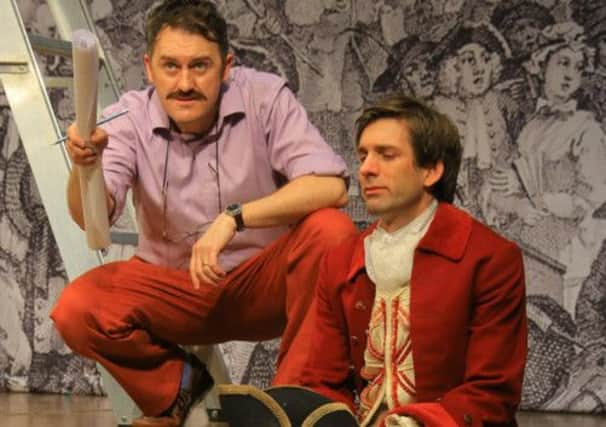Joyce McMillan: Pitlochry’s summer season leads the way


With the exception of the company for Pitlochry’s opening production of Hello, Dolly!, this is the largest professional cast I have seen on a Scottish stage this year; and A Chorus Of Disapproval is just one of eight shows scheduled to appear at Pitlochry this year, at least four of them on a similar scale – including, at Christmas, a stage version of the much-loved film It’s A Wonderful Life.
Anyone interested in Scotland’s theatre scene, in other words, is bound to wonder just how Pitlochry manages to achieve all this. Since its current artistic director John Durnin arrived in 2003, it has not only maintained its stay-six-days-see-six-plays summer offer, but has extended its season into the winter, and retained a full-time summer season acting ensemble of 18 performers, from May to mid-October. It receives relatively little help from public funds; less than a quarter of its £3 million annual budget comes from the public purse, and it earns almost 70 per cent of its income through ticket sales, catering and retail. Yet it remains the largest employer in the Pitlochry area; and because so many of its audience members stay overnight, spending money in local hotels and restaurants, the theatre is estimated to bring an astonishing £13-20 million a year into the economy of an area with a population of only 11,000 people – more than £1,000 for every individual in Highland Perthshire.
Advertisement
Hide AdAccording to Durnin, the secret of the theatre’s success lies in three areas: long-term planning, extremely efficient use of resources, and a very close and well-researched relationship with the theatre’s paying public.
“We know that despite the stereotype that our audiences are elderly, they are in fact very similar, in demographic terms, to the audiences at the Citizens’ or the Lyceum,” says Durnin. “We know that 85 per cent of them come from Scotland, and 15 per cent from south of the Border. And we know that they absolutely love the musicals we’ve been offering in recent years; the average age of our audience has been dropping steadily since our first musical, Whisky Galore, four years ago.”
What Pitlochry offers, in other words, is a different model of how to run a theatre in Scotland, one which receives relatively little media attention and fewer reviews – compared with the high-profile work of the big companies in Glasgow, Edinburgh and Dundee – but which has its own wisdom to offer, nonetheless. It’s true that Pitlochry’s repertoire is fairly conservative, that it commissions no new work, and that the plays it presents are overwhelmingly from a standard English repertoire; this year, apart from the musicals, it offers Ayckbourn, Wilde, Coward, Alan Bennett, Jim Cartwright, and just one play made in Scotland, a revival of The Steamie.
Yet if the Theatre In The Hills were more closely involved in Scotland’s theatre conversation, then other companies might have plenty to learn from its operating style. They might learn about how to develop a superb theatrical building complex, and to keep developing it, from humble beginnings 60 years ago in a marquee tent. They might learn about a long-term tradition of costume and design that makes it possible to generate lavish scenic effects with relatively limited resources. And they might learn about how it’s possible to create a whole series of productions with 12, 14, 18 actors on stage, instead of the current Scottish average of four or five; simply by making that big acting company an absolute priority, and fitting the entire organisation around it, in good times and bad, every summer for 60 years.